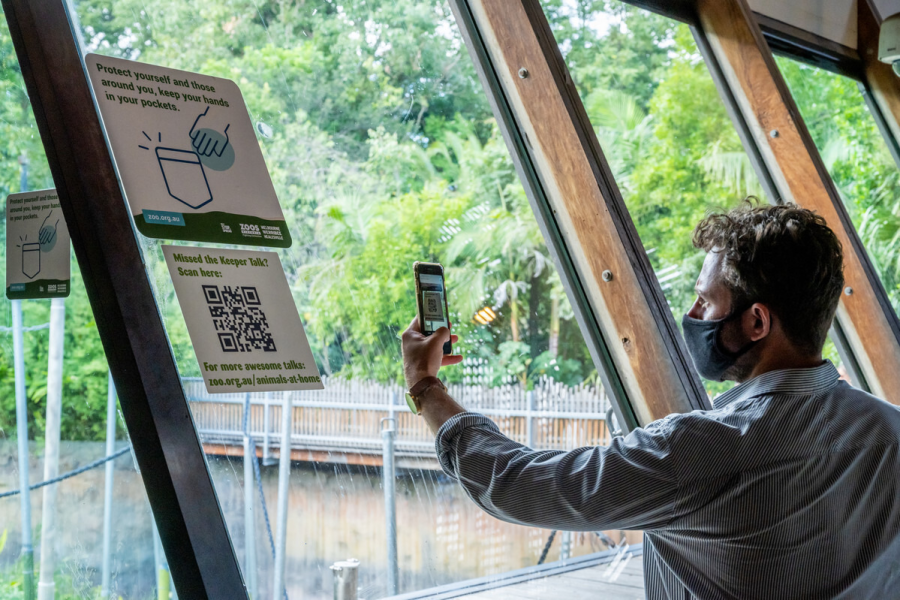Cracking the Code

They seem to be everywhere today—on packages of biscuit mix, gas pumps, and even hovering over video during the evening TV news. Quick Response (QR) codes—those little squares made of black and white boxes—can unlock a wealth of information when scanned by a smartphone’s camera. An adaptation of the average barcode, the QR code emerged in 1994 when aiding Toyota in its manufacturing process. Later, the codes began appearing in restaurants, around museums, and on advertisements. Around 2010, however, the QR code faded in popularity right along with the flip phone. Still, as the global pandemic spread in 2020, the QR code experienced a resurgence. Today, those squares can help limit direct contact with guests by allowing for touchless payments—even replacing physical menus at dining locations.
Since their early years, the technology surrounding QR codes has also improved immensely, making them even easier for guests to use and operators to set up.
How Attractions Can Use QR Codes
Melbourne Zoo in Australia unveiled “a scan-tastic new way to discover wildlife.” Using QR technology, visitors can access virtual zookeeper talks and extra species information for the zoo’s tiger, orangutan, snow leopard, and other animal exhibits.
“We’ve had an overwhelmingly positive response to our QR installations,” says Michael Zubreckyj with Melbourne Zoo’s media team. “We’ve found that people are quite familiar with QR after COVID-19, so it’s been quite a smooth introduction.”
For about 10 years, the British Museum in London has used QR codes to help guests link to additional content for its gallery displays and special exhibitions.
“For those who want to explore the artwork further, they may link to an interview with a curator or one of the artists,” says Stuart Frost, head of interpretation at the museum.
For attractions considering adopting QR codes into their facilities, Frost offers some advice: They work best when accompanied by a clear call to action, and there needs to be a good reward for the effort of scanning the code. He recommends using QR codes selectively, only where they are necessary and can add value to a visit.
Beccy Angus, head of discovery and learning at Royal Zoological Society of Scotland (RZSS) Edinburgh Zoo, agrees with Frost. She says linking to a word-heavy web page can be just as intimidating as what was trying to be avoided, she says.
The RZSS Edinburgh Zoo offers QR codes that take guests to their conservation project websites, keeper talks, and gives visitors additional layers of information.
“It’s important to think about what story you’re trying to tell, and if a QR code is the best way to tell it,” says Angus.
Coding a Call to Action
Visitors at the Bellevue Botanical Garden in Bellevue, Washington, United States, use their smartphones to tap or scan QR codes to reveal more about the plant beds. It tells them when particular plants bloom, the foliage color, and other plant attributes, as well as shows photos, says Darcy McInnis, the garden’s communication manager. Yet, she says the garden has discovered a downside to sharing the codes.
“The signs with the QR codes are expensive, and guests continually damage them,” notes McInnis. “So, we are looking for an alternative solution.”
Hyannis Whale Watcher Cruises on Cape Cod in Massachusetts places the codes on its rack cards and visitor guides to direct traffic to the cruise website for everything a potential customer needs to know, which also facilitates online booking, says marketing manager Mel Marchand.
“We also put them on our tickets for passengers who book online,” Marchand says. “As they enter the boat, we can scan the code on their printed ticket or on their phone.”
